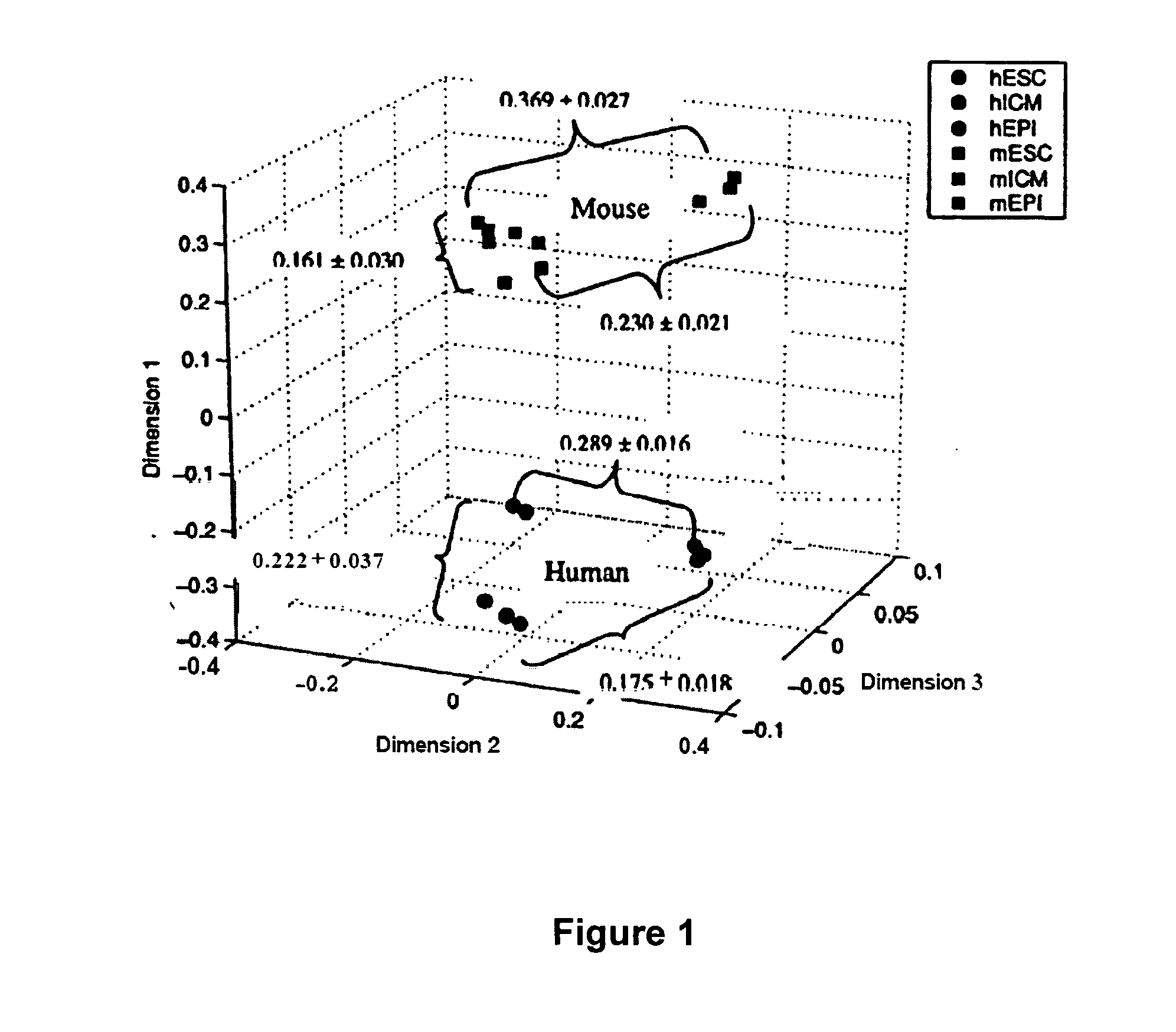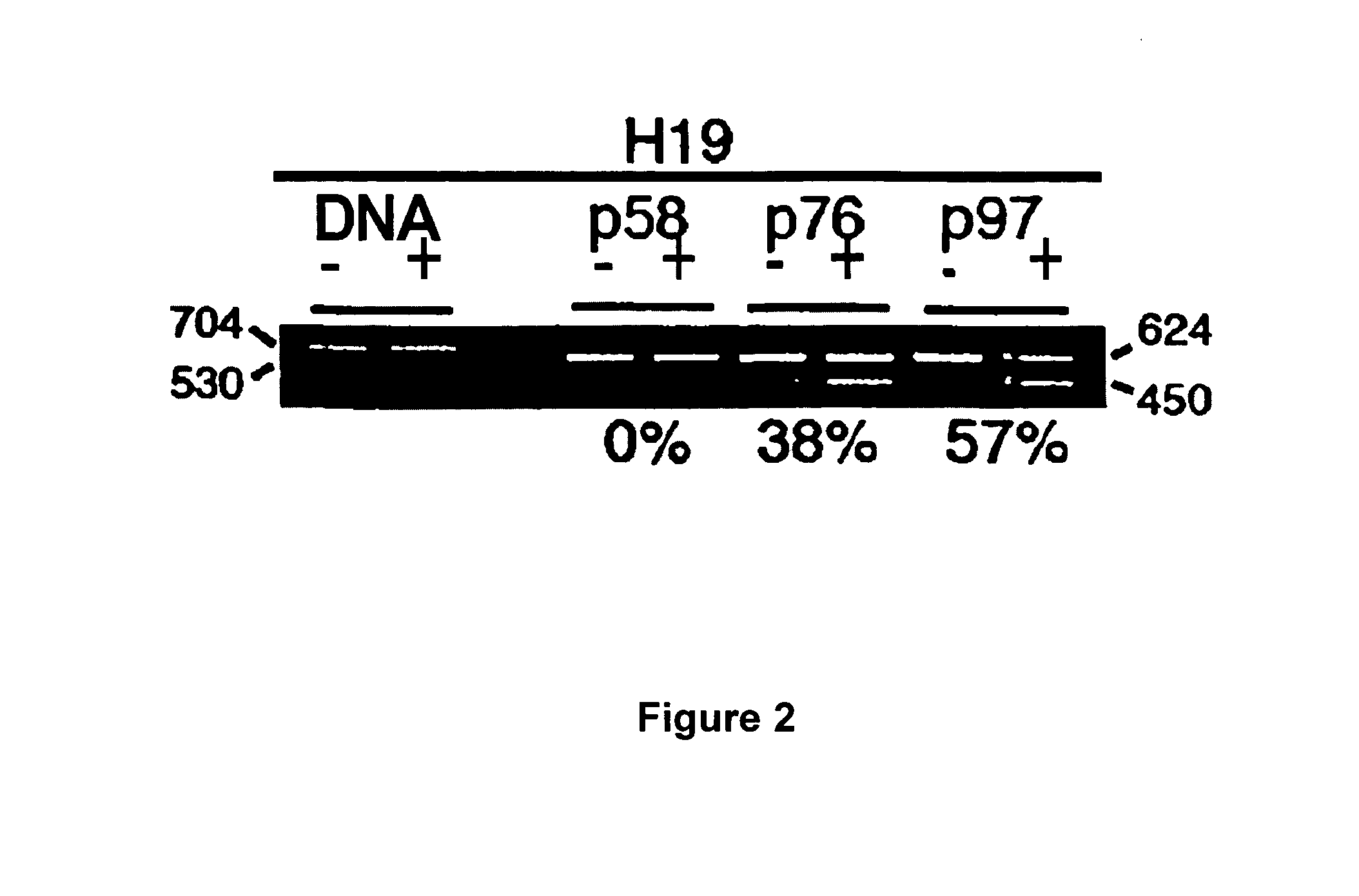Non-human primate embryonic stem and germ cells: methods of use and methods of making same
a technology of germ cells and embryonic stem cells, which is applied in the field of study and development of nonhuman primate embryonic stem cells, can solve the problems of limit the use of mouse embryonic stem cells to demonstrate safety and efficacy of stem cell-based transplants, and achieve the effect of preventing or alleviating the occurrence or negative effects of diseas
- Summary
- Abstract
- Description
- Claims
- Application Information
AI Technical Summary
Benefits of technology
Problems solved by technology
Method used
Image
Examples
example i
3. What is the Level of DNA Methylation in Embryos, Fetuses, Placentae, and Offspring After ART, NT, or Natural Coatings?
[0093]Rationale: Using an antibody to 5-methylcytidine, we first will address the global level of DNA methylation in fertilized NHP embryos after IVF or ICSI to determine if the paternal genome rapidly loses methylation after sperm incorporation, as reported in the mouse and bovine systems. Next, we will determine the DNA methylation patterns observed during preimplantation development to the expanded blastocyst stage in IVF and ICSI derived embryos using standard in vitro culturing techniques. These observations will be compared to in vivo fertilized blastocyst flushed from the uteri of Al or naturally fertilized females. We will also explore the global level of DNA methylation after somatic cell nuclear transfer and in vitro development to the expanded blastocyst stage. Finally, we will examine DNA modifications in early post-implantation development by explorin...
example 1
4. Dynamic Imaging of ES Cell Fates After Transplantation
[0111]Rationale: In this Aim, we explore differentiated stem cell fates after allograft transplantation (4.2) and immune matching of NT-nhp-ESCs in the first question. We ask if pluripotent NT-nhp-ES cells transplanted into the kidney capsule of the autologous female (i.e. cloned stem cells back into the NHP that provided both the egg and the somatic cell) are indeed immune matched and tolerated as a prelude to designing nonhuman primates disease models which might be cured through stem cell technology following transplantation. Next, we test whether nhp-ESC and NT-nhp-ES cells stably differentiated into neural or hematopoietic stem cells lineages, as well as from HESC, are immunotolerated when transplanted into localized sites in NHPs (e.g. subcutaneous, testicular, intramuscular or kidney capsule). The objective is to determine the long-term stability and fates of differentiated ES and NT-ES cells in vivo. Table II (Introduc...
example ii
6. Mechanisms Responsible for Maintenance of Epigenetic Status in Human and Non-Human Primate Pluripotent Stem Cells and Their Progeny
[0181]Having preliminarily established the pattern of expression of imprinted genes in hES cells and their differentiated derivatives, the methylation status of the relevant differentially methylated regions (DMRs) will be characterized using bisulphite sequencing (Olek et al., 1996, Nat Genet Nucleic Acids Res 24:5064-5066) as a means of defining the basis for the observed patterns of gene expression. In the specific case of the Igf2 / H19 imprinted gene cluster, these two reciprocally imprinted genes share a common gametically imprinted enhancer located downstream of both genes. This “H19 DMR” is paternally methylated, resulting in paternal H19 silencing and IGF2 expression. After implantation, the parent-specific methylation spreads to the H19 promoter and exonic sequences. Recent evidence suggests that once this secondary methylation has occurred, m...
PUM
| Property | Measurement | Unit |
|---|---|---|
| temperature | aaaaa | aaaaa |
| internal diameter | aaaaa | aaaaa |
| height | aaaaa | aaaaa |
Abstract
Description
Claims
Application Information
 Login to View More
Login to View More - R&D
- Intellectual Property
- Life Sciences
- Materials
- Tech Scout
- Unparalleled Data Quality
- Higher Quality Content
- 60% Fewer Hallucinations
Browse by: Latest US Patents, China's latest patents, Technical Efficacy Thesaurus, Application Domain, Technology Topic, Popular Technical Reports.
© 2025 PatSnap. All rights reserved.Legal|Privacy policy|Modern Slavery Act Transparency Statement|Sitemap|About US| Contact US: help@patsnap.com



